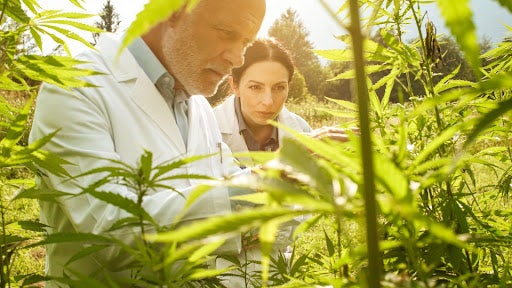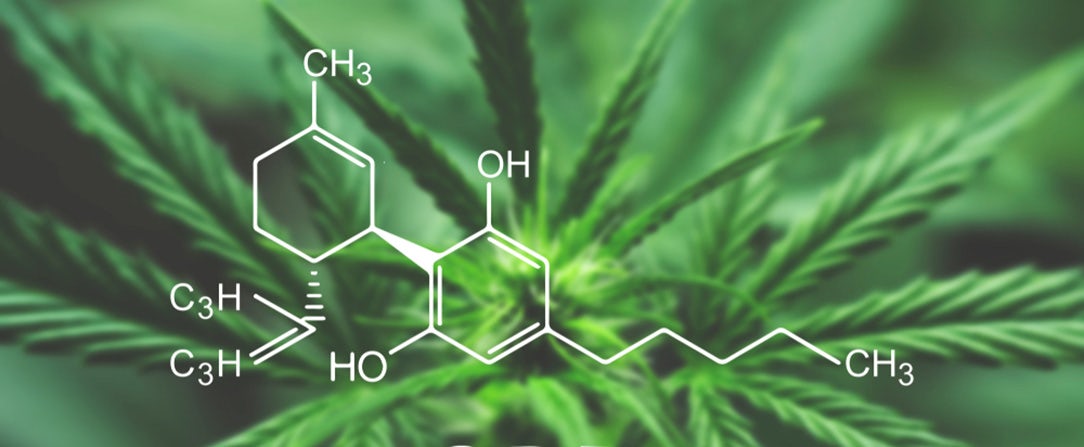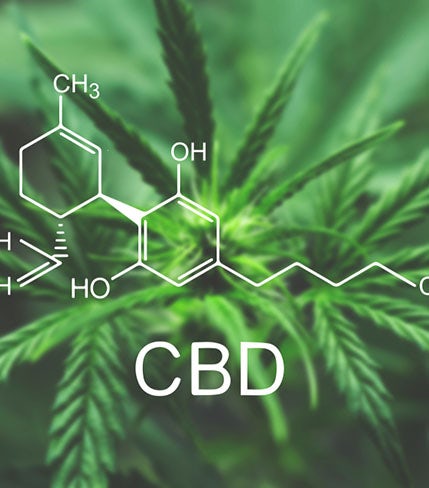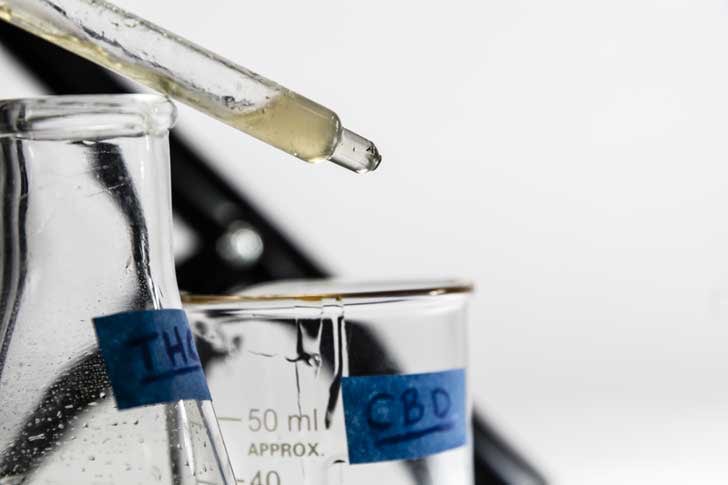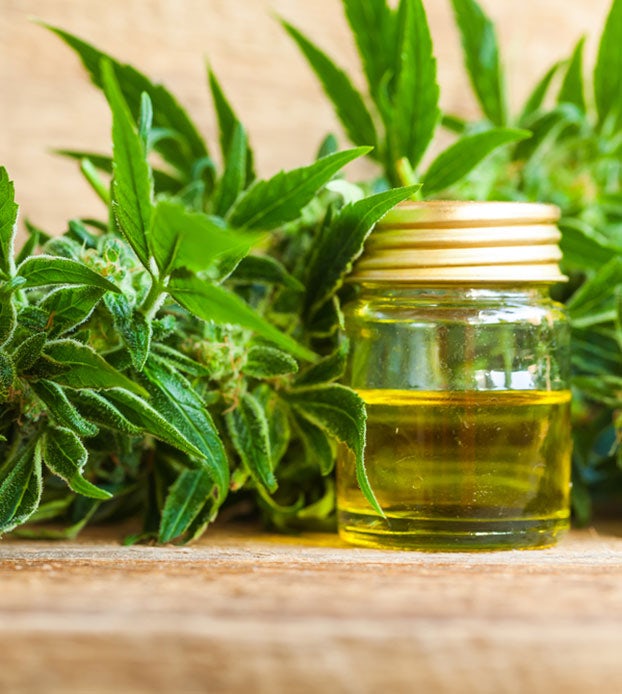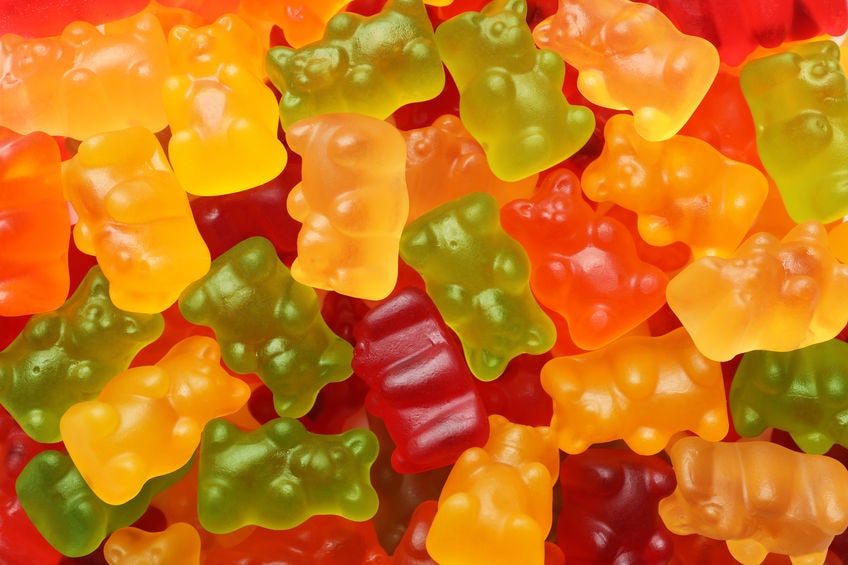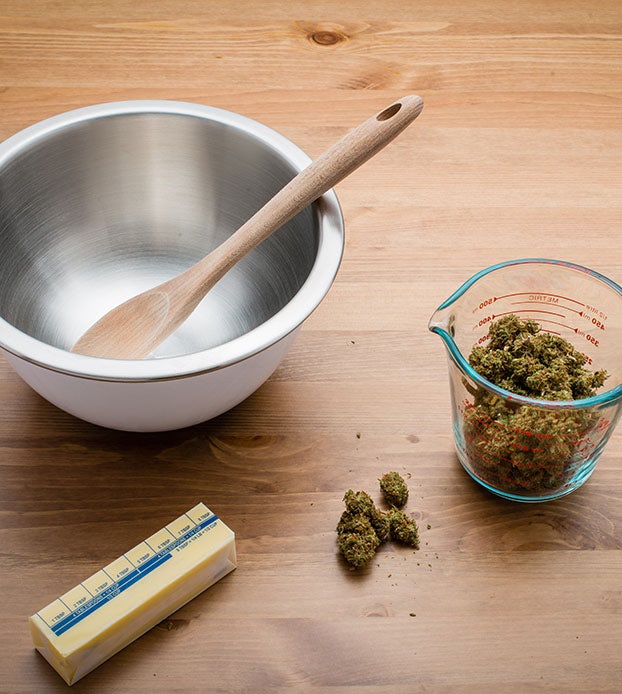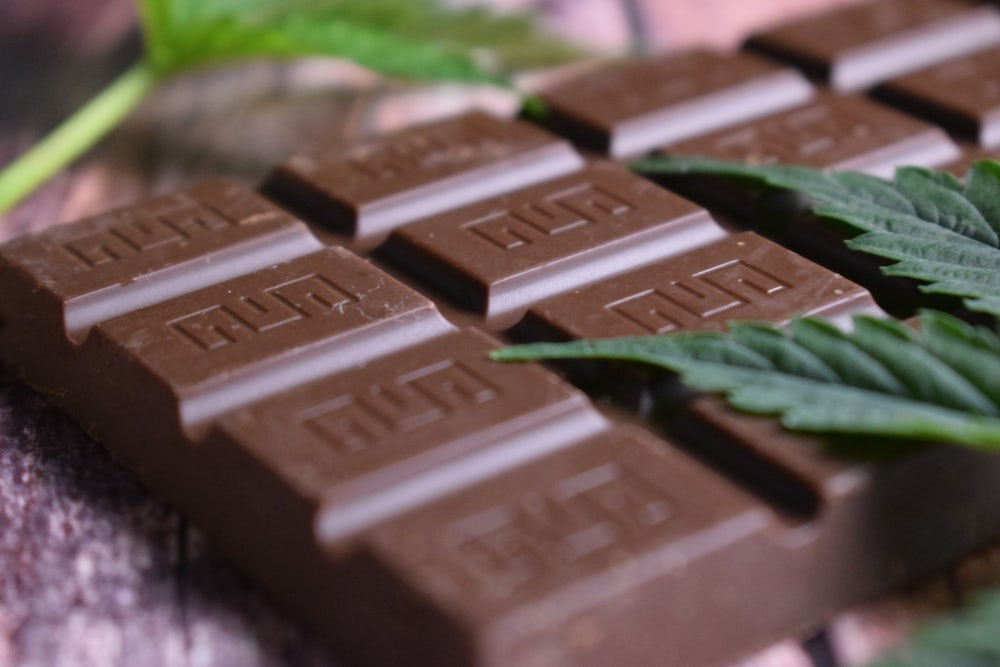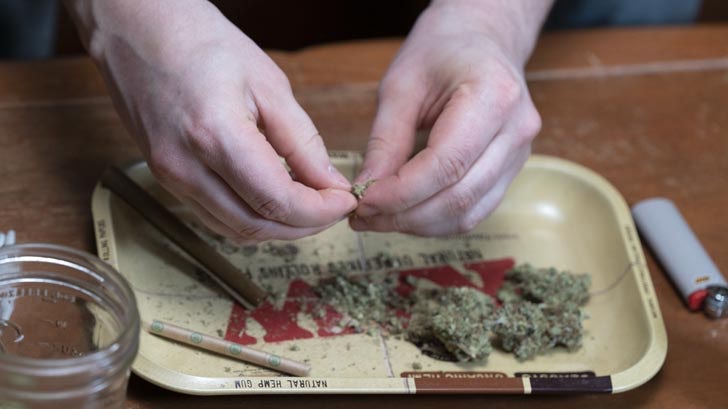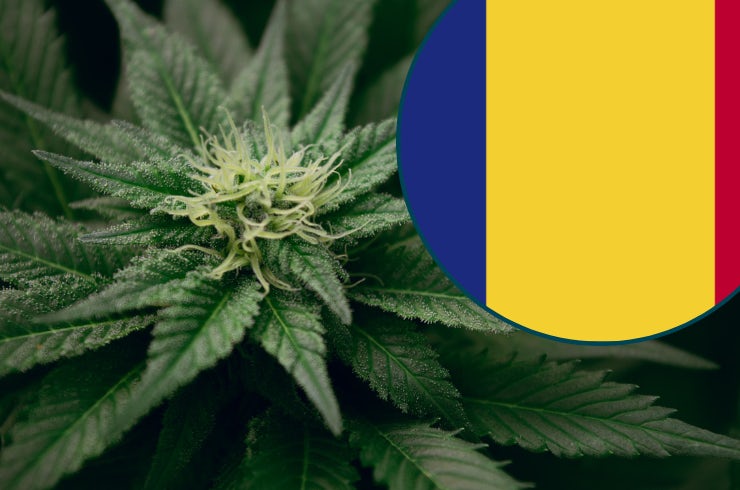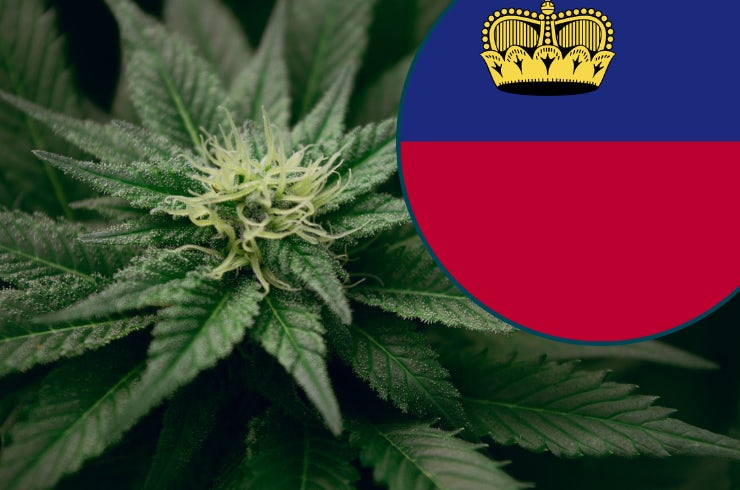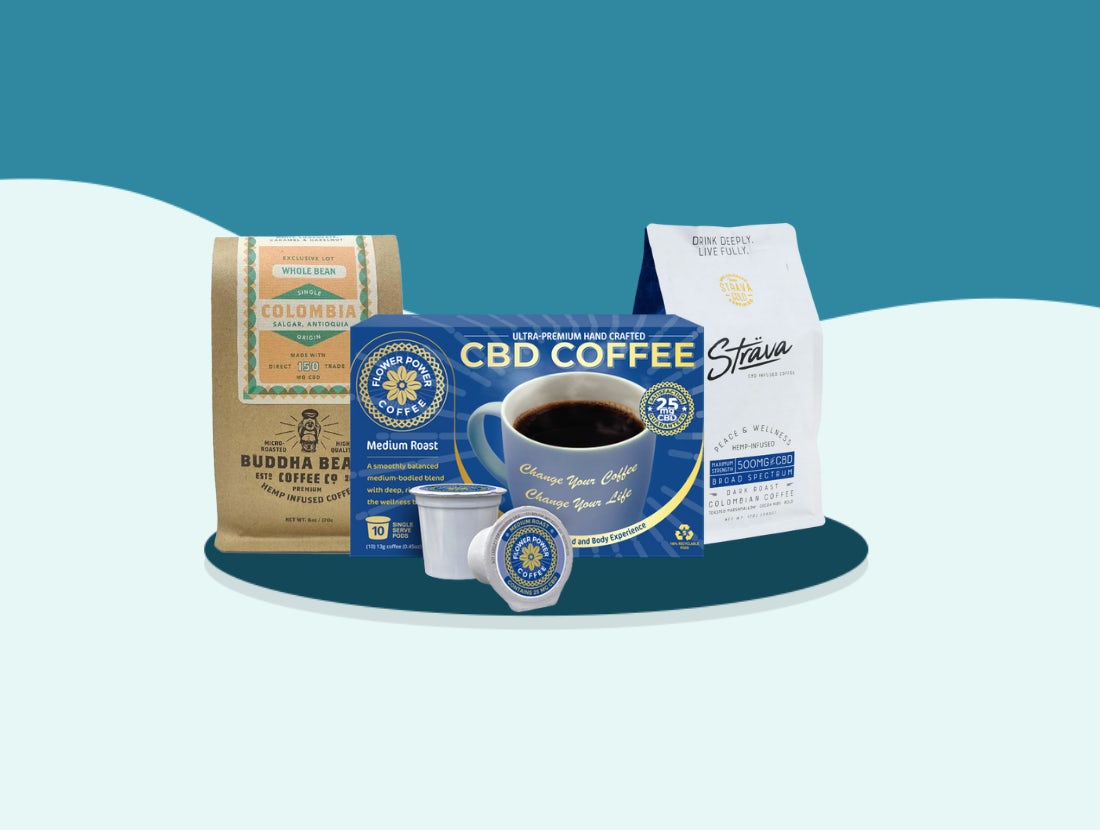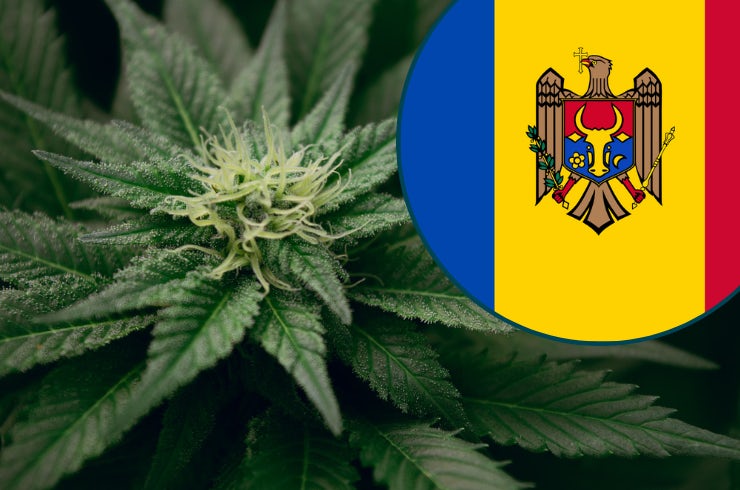Cannabidiol (CBD) belongs to a class of molecules called cannabinoids, which are produced almost exclusively in cannabis — hence the name. The two most well known and common cannabinoids are THC and CBD, and while they won’t alter the aroma and colors of cannabis, they do interact with numerous receptor systems in the human body and have a range of effects.
Like all plants, cannabis contains a plethora of molecules, some of which have specific functions — such as determining the smell, taste and color of the plant, but also what types of effects it can have on you.
CBD vs THC
Both THC and CBD were first isolated in a laboratory in the early 1940s by American researcher Roger Adams. It wasn’t until the 1960s, however, that Israeli researcher Raphael Mechoulam properly identified the chemical structure of CBD, which led to the wealth of knowledge and scope of research we have today.
Both THC and CBD are considered to be psychoactive drugs, as they can both affect your mind. Unlike THC, which is an intoxicating agent, CBD won’t get you high.
The two cannabinoids can also cause very different effects in other ways. For example, THC may be very helpful for treating nausea, spasticity, and pain, while CBD is known for its anti-epileptic, anti-inflammatory and anti-anxiety effects.
Potential effects of CBD vs THC1
| THC | CBD |
| Euphoria | Antipsychotic |
| Analgesic | Analgesic |
| Anti-inflammatory | Anti-inflammatory |
| Antiemetic | Anticonvulsive |
| Antioxidant | Antioxidant |
| Neuroprotective | Immunosuppressive |
| Antispasmodic | |
| Bronchodilator | |
| Antipruritic |
CBD vs CBDA
Another cannabinoid that is often mentioned next to CBD is CBDA, its precursor, — an acidic molecule with a very similar structure that transforms into CBD when heated while smoking or vaping. This process is called decarboxylation, and a parallel process is responsible for the creation of THC. This is why eating raw cannabis won’t necessarily get you high — it is full of non-decarboxylated THCA. Cannabis products such as oils, tinctures and creams are usually decarboxylated as part of their preparation.
But CBDA — and THCA — also have therapeutic value. CBDA hasn’t been researched to the same extent as CBD, and the vast majority of what scientists do know about it is based on preclinical studies that don’t involve human subjects. That being said, scientists are gradually discovering the potential mechanisms of how it works — and through those mechanisms, its therapeutic potential.
Some healthcare professionals are already encouraged by what is known, much of it anecdotal accounts from patients in their practices.
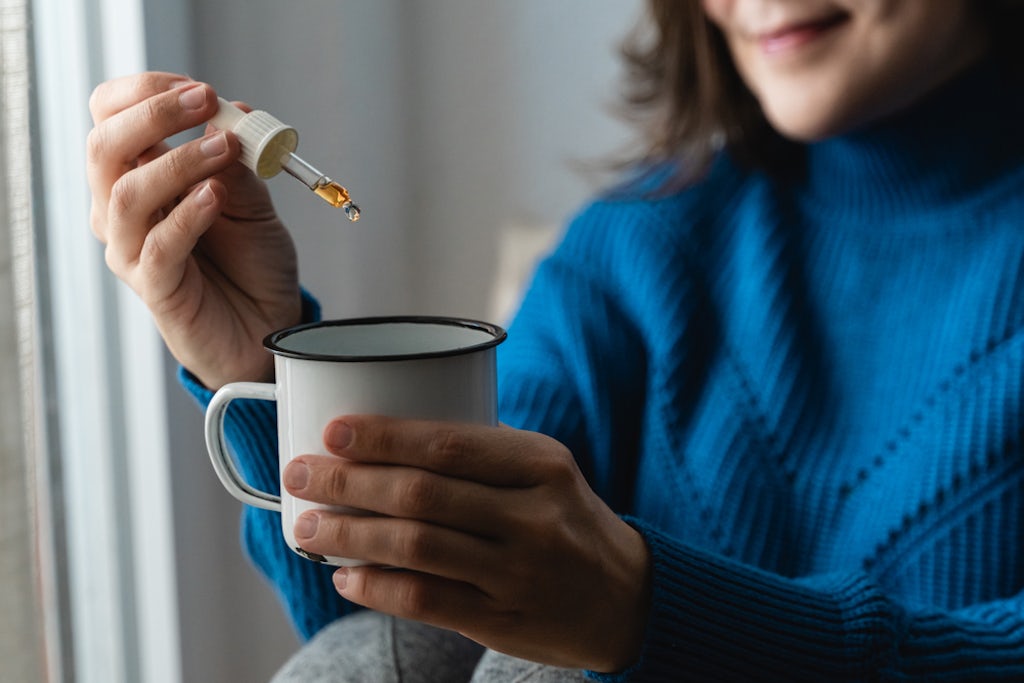
One of the leading cannabis clinicians in the U.S., Dr. Dustin Sulak, MD, of Healer.com, has written that in his clinical experience, “even small amounts of CBDA can have significant beneficial physiologic effects’.’
In one human trial involving CBDA, it was indeed shown to have higher bioavailability than CBD, but that’s not necessarily the only reason CBDA is sometimes more effective than CBD2. CBDA doesn’t seem to interact directly with the endocannabinoid system as CBD and THC do, but affects the body through other mechanisms.
Whether you decide to use CBD or CBDA depends on the effects you are looking for. In some cases CBD would be preferable to CBDA — mitigating THC’s adverse effects, for example. In other cases, CBDA products — or a mixture of CBD and CBDA — may be preferable, if for instance treatments with high doses of CBD have been unsuccessful for you. In any case, make sure to choose a reputable brand, if possible with GMP or ISO certification.
CBD vs CBG
CBD is also often compared to CBG (cannabigerol), another increasingly popular cannabinoid. CBD and CBG can sometimes work in similar ways — both targeting vanilloid and serotonin receptors.
CBG, however, also has some medicinal potential that CBD doesn’t, for instance as a treatment for hypertension and insulin resistance.
However, the scientific data on CBG is nowhere near as developed as what we have on CBD. There are practically no human studies on CBG, and we don’t know the effects of consuming high doses or potential drug interactions.
For now, if you have access to quality CBD products, there’s no reason to prioritize CBG products . If you are nevertheless looking to explore its vast potential suggested by the research and if you’re already using cannabis as a treatment, you might consider selecting chemovars that have higher CBG concentrations — but not ones where CBG is the dominant cannabinoid.
Why is CBD so popular?
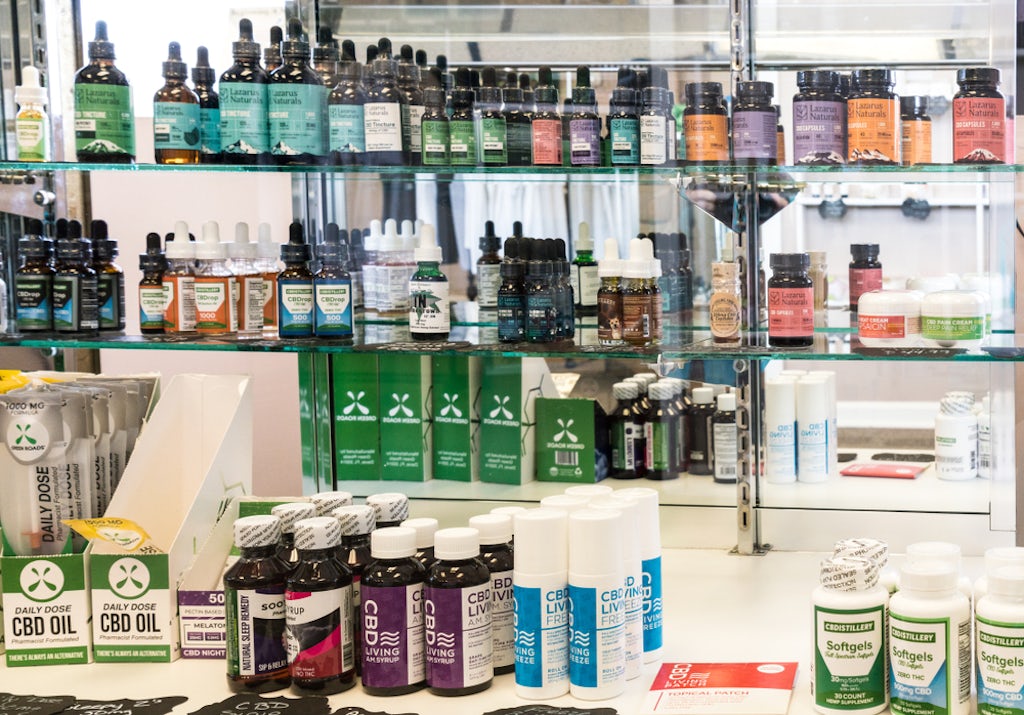
CBD has been everywhere over the past few years. From CBD oils and creams, to gummies, coffee beans, and even CBD infused pillows, how did CBD seemingly take over the world? The answer is, despite seeming as if it came out of nowhere, it was a process propelled by several forces. Broadly speaking, the three main reasons for the emergence of CBD are:
- The perception that CBD is a wonder-drug version of cannabis — particularly known for its uses to treat epilepsy — that doesn’t get you high.
- Its multi-target pharmacological nature, working on more than one mechanism, and creating several different effects.
- It’s everywhere. Because of demand created by the above, combined with a changing regulatory environment, and even though it’s not technically legal, CBD is readily sold online and in stores across the country.
1. An anti-seizure wonder drug
The first clinical research done on CBD as a potential treatment for epilepsy was in 19803, but the information gleaned from that study didn’t make their way into the broader public discussion until decades later. It’s hard to pinpoint when exactly the remarkable abilities of CBD first came to the attention of parents with epileptic kids. The first mention of it we found on the web was a 2012 news article from the Los Angeles Times, telling the story of then-five-year-old Jayden David, a boy who was suffering from Dravet syndrome, a rare form of treatment-resistant epilepsy. Jayden found freedom from his seizures with high-CBD cannabis oil.
A much more well-known story is that of Charlotte Figi, yet another child who suffered from Dravet syndrome and found relief from her symptoms with CBD oil. Charlotte’s story was featured on CNN in 2013 and millions of people saw with their own eyes how a few drops of cannabis oil succeeded where no other epilepsy treatment had —- reducing her seizures from 300 each week to less than three a month.
Roughly 30% of epilepsy cases are unmanageable4, and news about this alternative solution spread like wildfire. Families looking for the wonder plant started migrating to states with medical cannabis programs, becoming cannabis refugees, and their stories spread even further.
2. A multi-target panacea?
CBD is a multi-target drug, which means that unlike most other drugs, it acts on several receptors rather than just one or two. This also means it may have a variety of different effects. Some, like being an efficient anti-seizure treatment, are easily observable and quantifiable — when seizures stop. Others, like CBD’s anti-anxiety, antidepressant, and pain relieving properties, are more subjective and harder to measure.
The vast majority of what we know about CBD’s medicinal effects is based on laboratory studies, is far from being properly understood, and lacks solid scientific data on human subjects — aside from epilepsy5.
Nevertheless, unsubstantiated medical claims are constantly being made about CBD’s potential. More and more CBD products on the market promise relief from pain, depression, anxiety, neurodegenerative conditions, and a plethora of other symptoms and conditions.
Unfortunately, most of these are only potential benefits are hypothesized from laboratory and animal studies — scientists don’t know yet if CBD is effective for these conditions or at what doses CBD should be used.
3. Easy access
In 2018, the US government passed the Farm Bill, which excluded hemp from the definition of marijuana plants, which remain illegal under federal law. The law defined hemp as cannabis plants with less than 0.3% THC. It also facilitated the production and use of industrial hemp. Consequently, a lot of people — and an entire industry — began acting as if any and all hemp derived products were suddenly legal, including hemp-derived CBD products6.
In reality, CBD is not exactly legal under federal law. Nevertheless, CBD products are being sold all over the place based on this reading of the Farm Bill and the assumption that any hemp derived product is now legal.
Another factor that increased CBD’s popularity was the FDA approval of an antiepileptic cannabis-based drug named Epidiolex — a highly concentrated CBD extraction mixed with sesame oil and some flavoring. It is possible the fact that the FDA approved a CBD-based medication advanced the notion that all CBD products must be safe.
Ironically, the FDA approval of Epidiolex is one of the main reasons why marketing hemp-derived CBD products is considered unlawful by the FDA.
Is CBD legal?
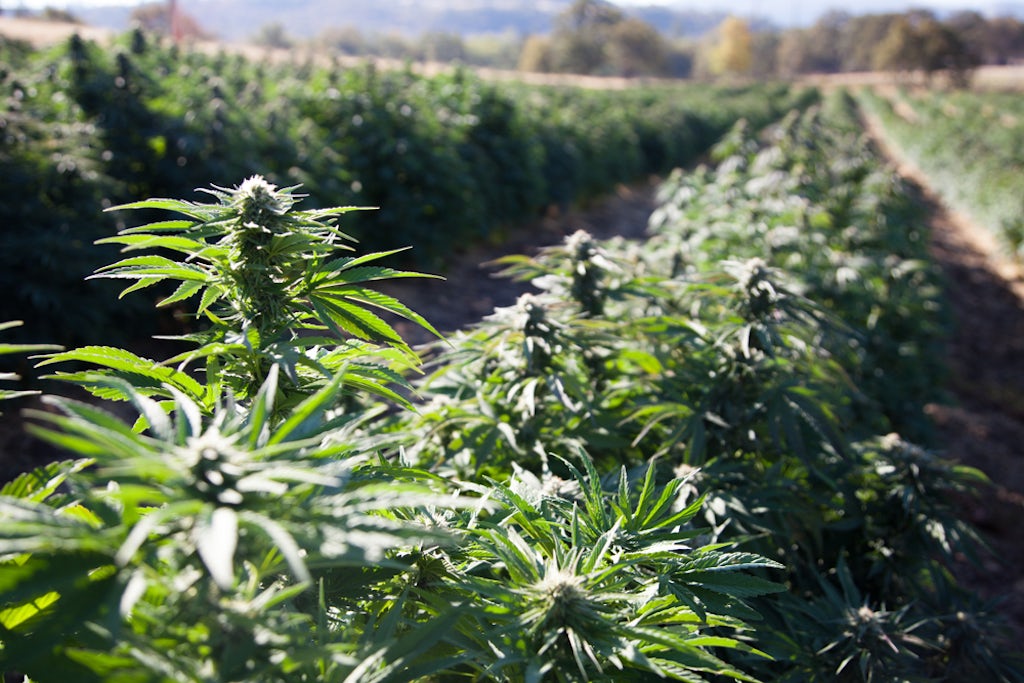
Despite popular belief, just because the Farm Bill legalized hemp doesn’t mean everything derived from hemp is legal too. In testimony before the Senate in 2019, then-FDA Deputy Commissioner Dr. Amy Abernethy clarified that CBD products may not be marketed as food or food supplements.
According to Abernethy’s testimony, there is no confusion — CBD products that are marketed as food and food supplements are not authorized by the FDA, and violate the federal regulations .
“It is unlawful under the [Food, Drug, and Cosmetic Act] to introduce into interstate commerce a food (including any animal food or feed) to which has been added a substance that is an active ingredient in an approved drug product or a substance for which substantial clinical investigations have been instituted, and the existence of such investigations has been made public,” Abernethy said.
“Similarly,” she added, “these types of substances are outside of the statutory definition of a dietary supplement.”
In other words, because CBD is the main active ingredient in the FDA approved Epidiolex, it is unlawful to market foods and food supplements containing CBD.
“The passage of the 2018 Farm Bill has led to the misperception that all products made from or containing hemp, including those made with CBD, are now legal to sell in interstate commerce,” she said.
That said, the FDA has very limited enforcement capabilities and authority.
The result is CBD is everywhere — in online shops, convenient stores, and gas stations. But that doesn’t mean it’s legal, safe, or that therapeutic claims made by manufacturers are substantiated. Just because it’s everywhere, doesn’t mean it’s safe.
The strange reality is that a psychoactive substance is simultaneously being sold as a prescribed medication and an over-the-counter food supplement. But the main issue with hemp derived products and their safety is less about the CBD and more about everything else in them. A 10% CBD oil is made of 90% of other materials, and in an unregulated market, that all-too-often includes pesticides, residuals, and other potentially harmful substances.
Is CBD safe?
CBD, like many cannabinoids, has been shown to be overall quite safe. . But that doesn’t make it completely risk free. The main safety issues with CBD are drug interactions, and unsafe manufacturing processes due to the unregulated environment.
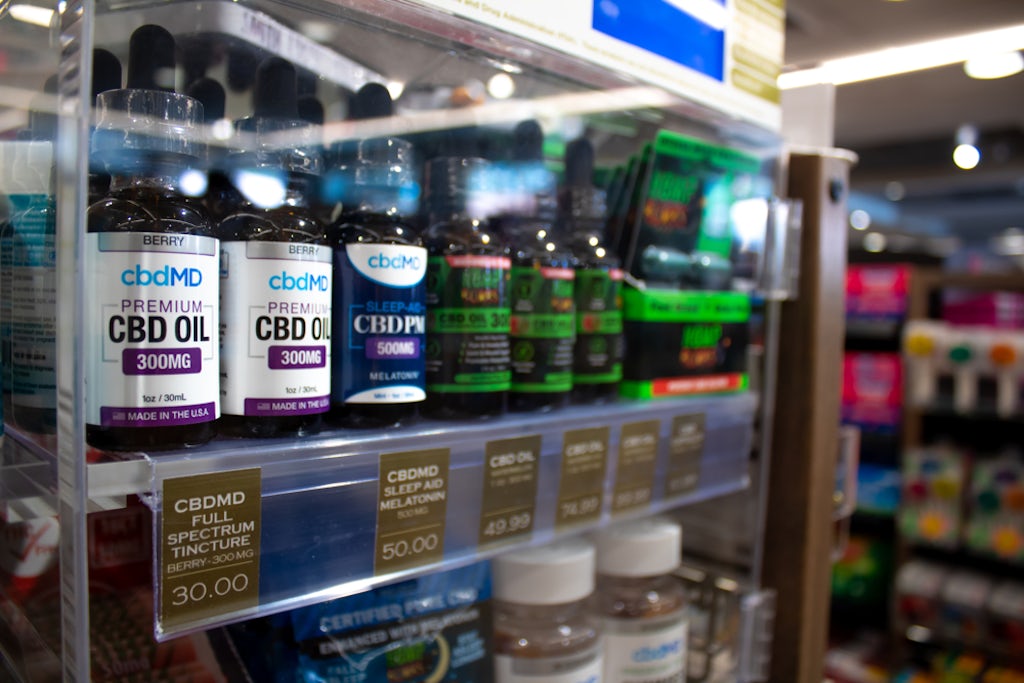
What’s in your CBD?
One of the main safety issues with CBD products is the manufacturing process, and specifically the lack of standards and regulation surrounding them. Since these are not FDA approved products, there’s no agency that is actively ensuring CBD products are safe to use or properly labeled.
This is important because you can buy CBD products everywhere, or at least products that are labeled as containing CBD. But a label doesn’t mean much in a reality where no one oversees its accuracy and the production process of the product behind it.
The FDA itself states on its CBD portal, that it ”has tested the chemical content of cannabinoid compounds in some of the products, and many were found to not contain the levels of CBD they claimed. We are also investigating reports of CBD potentially containing unsafe levels of contaminants (e.g., pesticides, heavy metals, THC)”7.
Indeed, researchers who studied dozens of hemp-derived CBD oils found that some didn’t include cannabidiol at all, or had different amounts or other potentially harmful substances. A label means nothing if you can’t rely on it’s content, and unfortunately that’s where the CBD industry is at the moment.
What are the potential side effects of CBD?
CBD rightfully enjoys a reputation of a substance with a low side effect profile, but like every other substance in the world, it does have some. According to the FDA there is still a lot about CBD’s side effects that we don’t know, including:
- How daily consumption of CBD can influence side effects
- What dosages may trigger side effects
- How different consumption methods influence side effects
- The influence of CBD on the developing brain
- Effects on a fetus or breastfeed baby
- Whether it cause male reproductive toxicity in humans (as witnessed in animal studies)
The potential side effects of CBD that the FDA lists include:
- Liver injury
- Damage to the reproductive system
- Somnolence
- Diarrhea and/or loss of appetite
- Irritability and agitation
What drugs should not be taken with CBD?
A recent review of scientific research looked at the potential drug interactions of cannabidiol, primarily those that should not be taken with CBD or that would require dosage modification when taken together with CBD8. In any case, consult your physician or pharmacist when taking CBD with any of these medications:
CBD’s interaction with anti-epileptic drugs
Unsurprisingly, CBD may interfere with some anti-epileptic drugs — and they can interfere with CBD. According to the study, the following medications may either decrease the levels or effects of CBD, or their levels may be increased by CBD, depending on the mechanism of action:
- Carbamazepine
- Eslicarbazepine
- Ethosuximide
- Lamotrigine
- Oxcarbazepine
- Phenobarbital
- Phenytoin
- Rufinamide
- Zonisamide
CBD’s interaction with benzodiazepines
Benzodiazepines are often prescribed for conditions such as anxiety, insomnia, seizure control, and muscle relaxation. Considering CBD is suggested as a potential treatment for all of these, it’s not surprising that these two types of drugs may also interact with each other.
Depending on the drug in question, CBD may interact in different ways and create a variety of adverse effects with the following:
- Chlordiazepoxide
- Clonazepam
- Clobazam
- Diazepam
- Lorazepam
CBD’s interaction with antidepressants
Here as well, the potential interactions shouldn’t be of any surprise given the suggested antidepressant effects of CBD. Depending on the antidepressant, CBD may either be affected and its effects increased, or will increase the levels or effects of the following antidepressants:
- Desipramine
- Fluoxetine
- Imipramine
- Trimipramine
CBD’s interactions with other medications
The review also suggested CBD may interact with some other medications including:
- Acetaminophen
- Baricitinib
- Capsazepine
- Celecoxib
- Corticosteroids
- Cyclosporine and tacrolimus
- Etoricoxib
- Hydrocortisone
- Morphine
- Naproxen
- Prednisolone
- Tofacitinib
- Tramadol
- Warfarin
What are the benefits of CBD?
If you pay heed to hype, you might believe that CBD can do anything and everything — from treating your pain and growing your hair back, to bringing peace to the Middle East and babysitting your kids. It certainly has many potential benefits, but you should differentiate between what people say CBD is good for and what clinical research suggests it may do, as the two are not always aligned.
A recent survey found that “the top four reasons for using CBD were self perceived anxiety, sleep problems, stress, and general health and wellbeing.”9
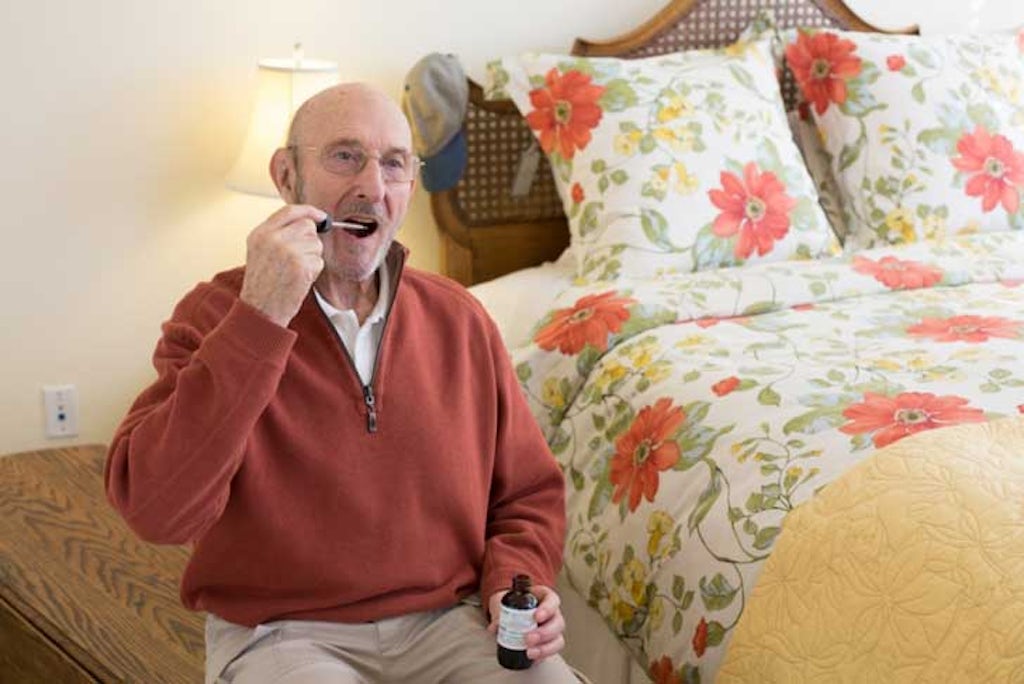
But just because that’s what people are using it for doesn’t mean those are its scientific benefits. A recent review of scientific literature10 on the pharmacology and therapeutic targets of CBD, looked at the state of clinical research on CBD in a variety of conditions and may give us a better understanding of its potential benefits.
But, it’s important to consider some of the limitations of this exhaustive review, which help explain why it lists so few proven benefits:
- The CBD dosages that have been used vary significantly and may influence the results.
- The age and gender of the participants wasn’t always consistent.
- The diversity of consumption methods could also influence whether or not CBD treatment was effective.
- Lastly, there is evidence to support the more positive results of whole plant CBD products vs isolated CBD extracts11, both of which were used in the studies described in the review.
That study stated that “the most compelling evidence supporting the medicinal use of CBD is for the treatment of epilepsy”. Indeed, the scientific literature regarding CBD and some forms of epilepsy is rich and full of data.
But CBD has also been researched as a potential treatment for other neurological conditions such as Huntington’s and Parkinson’s diseases. Unfortunately there is much less data on these conditions, and the results from the studies are mixed.
For pain related conditions, such as MS, fibromyalgia, Crohn’s disease and neuropathic pain, the review suggested there is “a limited number of studies of varying rigor”, but the results of these studies are also mixed.
CBD has also been researched for a variety of inflammatory conditions such as gastrointestinal inflammation, ulcerative colitis, glaucoma, graft-versus-host disease, and diabetes. Here as well, the results are limited and the review states “there is insufficient evidence to draw clinically meaningful conclusions.”
For anxiety disorders, the review found very limited data to support the efficacy of CBD., Mixed results from the existing research “suggest that controlled studies to identify an effective dose range and dosing regimen are needed.”
When it comes to other psychiatric illnesses such as schizophrenia, the few existing studies had mixed results. However, there is significant evidence suggesting CBD may “reduce psychotic symptoms associated with THC usage”.
Finally, the review stated that “despite popular belief, few human studies examining CBD treatment of substance use disorder have been conducted and while some of these results are intriguing, not enough evidence exists to indicate CBD as a viable treatment option for substance use disorder.”
How to choose CBD products
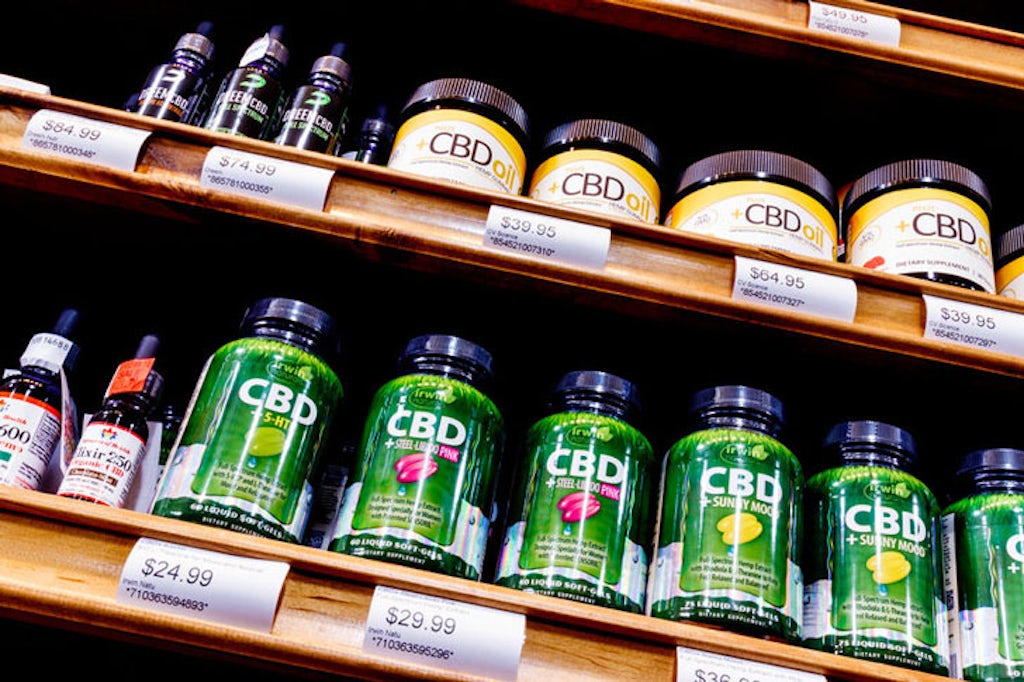
There are many types of CBD products on the market today, ranging from CBD-dominant flower, CBD tinctures, oils, edibles, creams, and other topicals. Each of these relates to one of three main categories:
- Inhaled products, such as flower and oils
- Ingested products, such as edibles, tinctures, oils
- Topical products, such as creams, gels, ointments, and patches
All of these product types have pros and cons, and may be more or less relevant for treating specific conditions and symptoms. Regardless of what type of product you choose, however, there are a few important questions to consider when looking for CBD products.
The main considerations are the cannabinoid composition, the source of your CBD (hemp vs marijuana), and the production process.
Look at the production process
The first and arguably most important consideration is related to the production method used. This is the primary safety concern with CBD products: Does your product actually have the amount of CBD that the label claims? Are there any other, potentially harmful substances such as pesticides, contaminates, residues, or synthetic cannabinoids in your product?
These are all potential pitfalls that may be avoided by choosing the right brand. As mentioned above, the CBD market is mostly unregulated. This means that there’s very little oversight over how products are made. Hypothetically, anyone could bottle a liquid in their garage and sell it as CBD food supplements.
Some brands are voluntarily adopting high standards such as ISO (International Organization for Standardization), GAP (Good Agricultural Practices), and GMP (Good Manufacturing Practices). By choosing brands that adhere to these standards, you’re greatly increasing your chances of getting a consistent, high-quality product. The majority of CBD brands probably won’t follow these standards, but such companies do exist and you should prioritize them.
Know the source of your CBD
If you live in a state with a legal medical marijuana program, the best way to maximize the chance of getting a high quality CBD product without doing too much research is to choose one produced by a licensed cannabis producer and sold in a licensed dispensary.
These products are most often held to the same high production and testing standards as higher THC products. They are also more likely to have a richer terpenoid profile and higher concentrations of cannabinoids, so regardless of the production methods, you’re likely to get a higher quality product.
In contrast, many hemp-derived CBD products are not subject to the rigorous standards in place for most medical marijuana programs. In addition, hemp-derived extracts and other products tend to have less diverse terpenoid and cannabinoid profiles.
Differences in CBD extraction methods
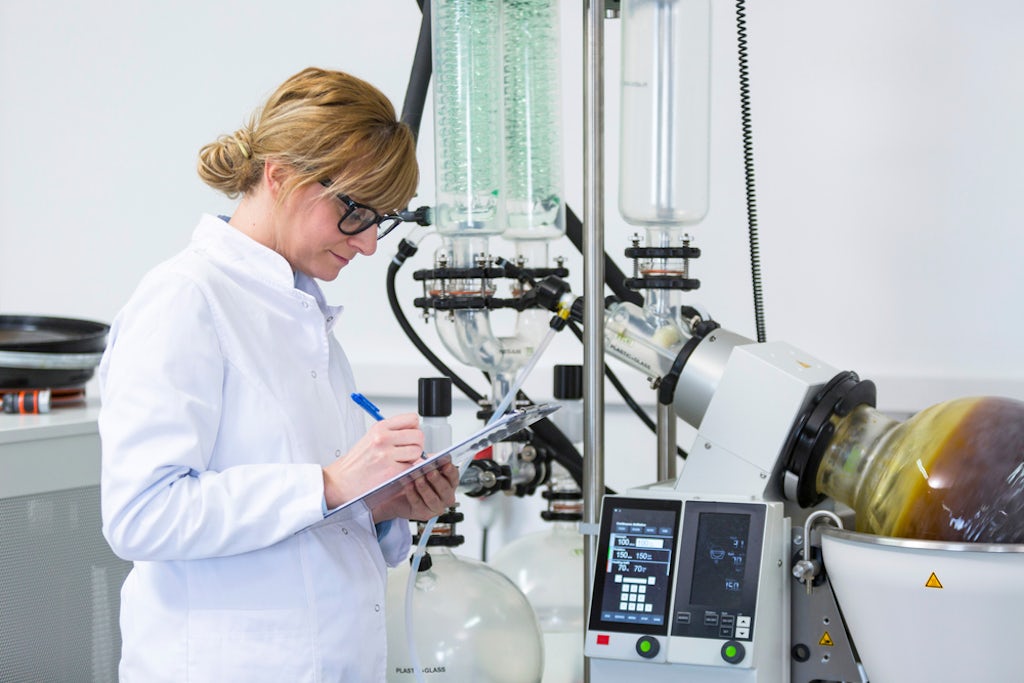
There are three main types of CBD products — those that use a full-spectrum extraction of CBD, an isolated extract, or a broad-spectrum extraction.
- Products based on a full spectrum extract use a whole plant extraction. This means that all cannabinoids (including trace amounts of THC), terpenes, flavonoids, and other phytonutrients present in the plant are preserved and used in the final product. This is of course a given if you’re getting dried flower.
- In CBD isolate products (sometimes called THC-free), all cannabinoids, terpenes, flavonoids and other phytonutrients are separated during the extraction process, and only pure CBD remains and is infused into the final product.
- Products produced and marketed as broad spectrum extract should contain numerous cannabinoids, but should be free from THC. With the exception of THC, all cannabinoids, terpenes, flavonoids, and other phytonutrients are preserved and used in the final product.
Some believe, and there’s some scientific data to support the theory, that whole-plant extractions are more effective than isolated extracts and pharmaceuticals. This is based on the concept of plant molecule synergy, better known among cannabis enthusiasts and professionals as the entourage effect.
How to dose CBD
Dosing CBD products is different from the approach used with most pharmaceuticals. With conventional medication, we get a defined amount of substance in pills or other units, and are told how many units to take daily. With cannabis, the process is more personalized.
While there is no recommended dosing for CBD — other than for Epidiolex for childhood epilepsy — we do have data from several clinical trials on anxiety, Parkinson’s disease, and seizure disorders12. In those trials, effective dosing ranged from 1-50mg per kilogram of body weight, which for a 150lb person would be 68-3250mg per day. These are not necessarily the most effective doses for these treatments, but they are the only ones for which we have data
Naturally, and as previously mentioned, the results of the different studies were not consistent.
Finding the right dosage of CBD for you may take time, may require some trial and error, and is likely to be influenced by the above mentioned considerations. The best way to get faster results — both when choosing a product and looking for the right dose — is to work closely with a healthcare professional who knows their way around medical marijuana.
This may be your treating physician, a pharmacist, or a nurse, but as long as they have solid clinical experience working with cannabis they should be able to provide valuable advice and guidance that currently can’t always be extracted from the scientific literature, mainly due to the limitations discussed above.
How does CBD work in the body?
When explaining how cannabis works on the body, we often hear about the endocannabinoid system (ECS), and how cannabinoids such as THC and CBD activate or block cannabinoid receptors throughout the body, thus creating a variety of effects.
While this may be a good way to simplify a complex subject, it is a little bit lacking. CBD indeed interacts with the body’s two main cannabinoid receptors (CB1 and CB2), but this can account for only a small part of the effects of CBD. In fact there are other, non-cannabinoid receptors it can interact with.
CBD and cannabinoid receptors
CB1
CBD does not interact directly with the main binding site of CB1 receptors. Instead it will bind to a peripheral site, and rather than activate it, CBD will partially block it. This is the main reason for CBD’s ability to reduce some of THC’s adverse side effects. THC activates CB1, and CBD sneaks in the back door and turns it down a notch13.
Another cool way CBD affects us is by interacting with an enzyme called FAAH (fatty acid amide hydrolase). This enzyme is responsible for the degradation of anandamide once it has done its job. Anandamide is a natural molecule all vertebrates produce, which acts on CB1 receptors similarly to THC.
If CBD can interfere with FAAH activity, this would result in altered anandamide levels. In other words, CBD can directly influence the balance of your endocannabinoid system. Unfortunately there are studies showing CBD both inhibiting and activating FAAH, and researchers are still trying to figure out how it works14 15.
CB2
In the case of CB2 receptors, CBD can activate the main binding site, but it does so with a low affinity so the scientific relevance of this mechanism is still in question. This is thought to be one of the ways CBD can reduce the rewarding effects of cocaine16, and one of the mechanisms behind CBD’s anti-seizure effects17.
CBD and vanilloid receptors
The vanilloid receptors (aka TRPV channels) are another family of receptors that also interact with some cannabinoids. There are four primaryTRPV (1,2,3 and 4, and CBD seems to be one of the most potent cannabinoids to interact with most of them, but particularly TRPV1. Researchers believe that this channel may play an important role in some of the therapeutic benefits of CBD.
The authors of a recent review of existing research wrote that the evidence suggests “a role of TRPV receptor, particularly TRPV1, in mediating several potential therapeutic effects of CBD, such as neuroprotection and anti-convulsant effects, antipsychotic effects and immunomodulatory effects.”18
CBD and serotonin receptors
The same study also reviewed the literature on CBD’s interaction with a subtype of serotonin receptor called 5-HT1a. It concluded there is evidence that “many of CBD’s behavioral effects are due to actions at 5HT1a, and that CBD may potentially be therapeutic for certain psychiatric disorders.” The review cited studies that show a variety of CBD’s psychiatric effects mediated through the serotonin receptors, including its antidepressant, anti-aggression, and anxiolytic effects.
While the evidence is strongest for CBD’s interaction with these three families of receptors (CB, TRPV and serotonin), there is emerging research investigating CBD’s interaction with other receptors, particularly some of the G-protein coupled receptors (GPR), like GPR 55, GPR 18 and GPR 119). This is worth noting, as this multi-target property of CBD is considered to be one of the manifestations of the entourage effect, suggesting that the efficacy of some compounds may be explained by their ability to bind to different receptors and create similar effects via distinguished channels.
Sources
- Russo, E. B., & Marcu, J. (2017). Cannabis Pharmacology: The Usual Suspects and a Few Promising Leads. Advances in pharmacology (San Diego, Calif.), 80, 67–134. https://doi.org/10.1016/bs.apha.2017.03.004
- Pellesi, L., Licata, M., Verri, P., Vandelli, D., Palazzoli, F., Marchesi, F., Cainazzo, M. M., Pini, L. A., & Guerzoni, S. (2018). Pharmacokinetics and tolerability of oral cannabis preparations in patients with medication overuse headache (MOH)-a pilot study. European journal of clinical pharmacology, 74(11), 1427–1436. https://doi.org/10.1007/s00228-018-2516-3
- Cunha, J. M., Carlini, E. A., Pereira, A. E., Ramos, O. L., Pimentel, C., Gagliardi, R., Sanvito, W. L., Lander, N., & Mechoulam, R. (1980). Chronic administration of cannabidiol to healthy volunteers and epileptic patients. Pharmacology, 21(3), 175–185. https://doi.org/10.1159/000137430
- Detyniecki, K., & Hirsch, L. (2015). Marijuana Use in Epilepsy: The Myth and the Reality. Current neurology and neuroscience reports, 15(10), 65. https://doi.org/10.1007/s11910-015-0586-5
- Britch, S. C., Babalonis, S., & Walsh, S. L. (2021). Cannabidiol: pharmacology and therapeutic targets. Psychopharmacology, 238(1), 9–28. https://doi.org/10.1007/s00213-020-05712-8
- https://www.fda.gov/news-events/congressional-testimony/hemp-production-and-2018-farm-bill-07252019
- https://www.fda.gov/consumers/consumer-updates/what-you-need-know-and-what-were-working-find-out-about-products-containing-cannabis-or-cannabis
- Balachandran, P., Elsohly, M., & Hill, K. P. (2021). Cannabidiol Interactions with Medications, Illicit Substances, and Alcohol: a Comprehensive Review. Journal of general internal medicine, 10.1007/s11606-020-06504-8. Advance online publication. https://doi.org/10.1007/s11606-020-06504-8
- Moltke, J., & Hindocha, C. (2021). Reasons for cannabidiol use: a cross-sectional study of CBD users, focusing on self-perceived stress, anxiety, and sleep problems. Journal of cannabis research, 3(1), 5. https://doi.org/10.1186/s42238-021-00061-5
- Britch, S.C., Babalonis, S. & Walsh, S.L. Cannabidiol: pharmacology and therapeutic targets. Psychopharmacology 238, 9–28 (2021). https://doi.org/10.1007/s00213-020-05712-8
- Russo E. B. (2019). The Case for the Entourage Effect and Conventional Breeding of Clinical Cannabis: No “Strain,” No Gain. Frontiers in plant science, 9, 1969. https://doi.org/10.3389/fpls.2018.01969
- Millar, S. A., Stone, N. L., Bellman, Z. D., Yates, A. S., England, T. J., & O’Sullivan, S. E. (2019). A systematic review of cannabidiol dosing in clinical populations. British journal of clinical pharmacology, 85(9), 1888–1900. https://doi.org/10.1111/bcp.14038
- McPartland, J. M., Duncan, M., Di Marzo, V., & Pertwee, R. G. (2015). Are cannabidiol and Δ(9) -tetrahydrocannabivarin negative modulators of the endocannabinoid system? A systematic review. British journal of pharmacology, 172(3), 737–753. https://doi.org/10.1111/bph.12944
- McPartland, J. M., Duncan, M., Di Marzo, V., & Pertwee, R. G. (2015). Are cannabidiol and Δ(9) -tetrahydrocannabivarin negative modulators of the endocannabinoid system? A systematic review. British journal of pharmacology, 172(3), 737–753. https://doi.org/10.1111/bph.12944
- Massi, P., Valenti, M., Vaccani, A., Gasperi, V., Perletti, G., Marras, E., Fezza, F., Maccarrone, M., & Parolaro, D. (2008). 5-Lipoxygenase and anandamide hydrolase (FAAH) mediate the antitumor activity of cannabidiol, a non-psychoactive cannabinoid. Journal of neurochemistry, 104(4), 1091–1100. https://doi.org/10.1111/j.1471-4159.2007.05073.x
- Galaj, E., Bi, G. H., Yang, H. J., & Xi, Z. X. (2020). Cannabidiol attenuates the rewarding effects of cocaine in rats by CB2, 5-HT1A and TRPV1 receptor mechanisms. Neuropharmacology, 167, 107740. https://doi.org/10.1016/j.neuropharm.2019.107740
- https://www.epilepsybehavior.com/article/S1525-5050(17)30322-0/fulltext
- Britch, S. C., Babalonis, S., & Walsh, S. L. (2021). Cannabidiol: pharmacology and therapeutic targets. Psychopharmacology, 238(1), 9–28. https://doi.org/10.1007/s00213-020-05712-8
Sign up for bi-weekly updates, packed full of cannabis education, recipes, and tips. Your inbox will love it.

 Shop
Shop Support
Support